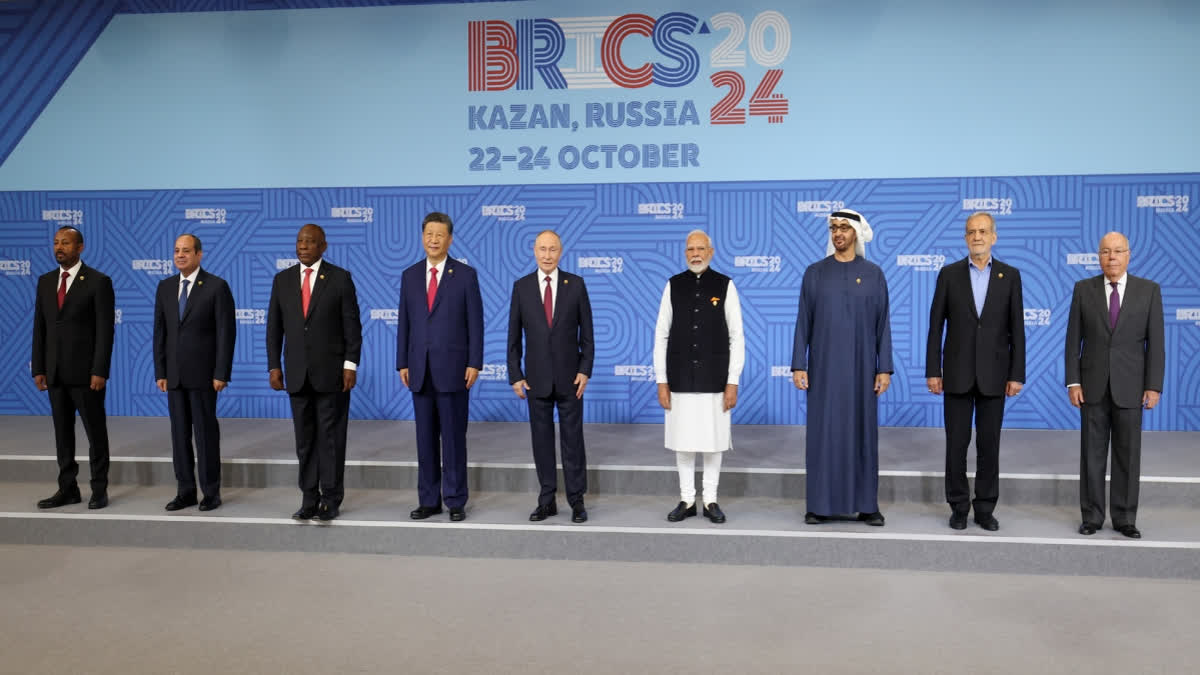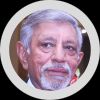The last event of the 16th BRICS+ summit in Kazan, Russia was the outreach program. The gathering included nations, not just members of the organisation, but those desirous of expanding their ties with it. Prime Minister Narendra Modi had already departed by then. India was represented by Dr S Jaishankar, the External Affairs Minister.
A total of 36 nations participated, 22 of which were represented by their heads of state, including the President of Turkey, Recep Tayyip Erdoğan, whose bid to join BRICS was blocked by India. India is unwilling to permit any nation, close to Pakistan to currently join the organisation.
A gathering of this nature in Russia, a state facing a host of western sanctions for its invasion of Ukraine and whose leader is facing an ICC (International Criminal Court) arrest warrant, is in itself remarkable. The presence of the UN Secretary General at the summit added to Russia’s stature, as also irked Ukraine. Ukraine subsequently rejected a visit by the Secretary General to Kiev.
The grouping barely discussed the Ukraine conflict but criticized Israel for its actions. This was boosted by the presence of the Palestinian President, Mahmoud Abbas in Kazan. PM Modi ignores SCO (Shanghai Cooperation Organization) gatherings but attends all BRICS summits implying that India is unwilling to play an active part in any institution dominated by China.
BRICS has expanded from its earlier five nation grouping to nine. There are almost twenty nations lining up to join, including Turkey, Mexico and Pakistan, many of which are close allies of the US. It currently includes 46% of the world’s population and 35% of the global GDP. Its competitor, G7 has 8% of the global population and 30% of the global GDP. BRICS also has 40% of the world’s oil production. Ironically, the two largest importers of oil, India and China, are members of the organization.
BRICS is remarkable in the way that unlike the G7, where all nations are members of US led security institutions and the SCO, where apart from two, all are members of the Chinese BRI, it has nations with independent views. BRICS has also established its own bank, NDB (New Development Bank), a counter to the IMF, where its forming participants are equal shareholders.
For India, the Kazan summit had multiple takeaways. Most important was the Modi-Xi meeting post a resolution to the ongoing standoff in Ladakh. The meeting set the path for normalization of ties, though overcoming the trust deficit will take time. As per reports, there is already positive movement along the LAC. India normalizing ties with China could impact anti-China groupings, such as the QUAD, which bank on Indian support to challenge China.
The PM addressed two sessions of the summit. He spoke on a ‘people-centric approach by BRICS to tackle challenges’ and ‘early adoption of a Comprehensive Convention on International Terrorism at the United Nations to combat the menace of terrorism.’ For India, terrorism is a major concern. PM Modi also stressed on primacy for the Global South. Both India and China are vying for the leadership of the global south. Neither country invites the other when it conducts its own summit of the global south.
Another major takeaway was the Russia-India summit, where PM Modi and President Putin would have discussed resolution of the Ukraine conflict, amongst other subjects. India is likely to play a major role in its resolution in the near future as it is the only nation, trusted by both, Russia and the US, the two main decision-makers on the conflict. Even Ukraine, which routinely objects to any meeting with Putin, is aware of India’s position. There were no comments from Zelensky on the current Russia-India interaction.
This was the second India-Russia summit in recent months which sent the message that India does not accept western sanctions on Russia. PM Modi inviting Putin to India for their annual bilateral meeting next year confirmed that summons issued by the ICC have no relevance for India.
The other important bilateral of PM Modi was with the Iranian President, Masoud Pezeshkian. The two leaders discussed the Middle East. As per the Indian foreign secretary, Vikram Misri, ‘Pezeshkian emphasised the need for peace and harmony in the region and the role that India could play in de-escalating the conflict, given its good relations with all parties involved.’
Currently, Palestinian, Lebanese and Israeli Ambassadors to India have been mentioning that India has a major role to play in the region. India has stayed away from commenting on the conflict, though it mentioned its concerns on two issues, terrorism against Israel and the killing of innocent civilians by Israel.
By resolving its differences with China, India is in an unenviable geopolitical position. It has ties with both groups, Russia-China as also the west, led by the US. Possibly, the Russia-India-China (RIC) trilateral may be revived in the near future adding to India’s geopolitical weight. For the west, India is a major trading partner with a growing economy and an immense market, a nation they would desire to keep on their side. Apart from Canada, there is no western nation, which does not seek to enhance its ties with India.
While some believe that India’s relations with Iran, Russia and China could act as a hinderance to its ties with the US, the fact remains that India is a bridge between the west and conflicts in Europe, Middle East and SE Asia. As PM Modi had rightly stated BRICS is not anti-west but non-west. India, leveraging its strategic autonomy, would never join any anti-west alliance however will neither criticize any of its allies to curry favour from the west. This is the Indian strength.
Another subtle message flowing from India to the US is that New Delhi has multiple allies and attempts to pressurize it would be meaningless. India, in a display of its western ties, has thus far not backed de-dollarization but could in the future in case it is taken for granted. While Trump has threatened 100% tariffs in case the Dollar is ignored, the fact remains that if adopted by a vast majority, it may be difficult for the US.
For India, the BRICS+ summit was a display of its strategic autonomy, global relevance as also an occasion to iron out its differences with China.
(Disclaimer: The opinions expressed in this article are those of the writer. The facts and opinions expressed here do not reflect the views of ETV Bharat)



